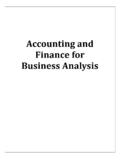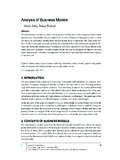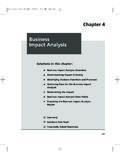Transcription of www.smart-BA.com The Fundamentals of Business …
1 The Fundamentals of Business analysis Business analysis is a straightforward process of analysing Business change requirements. Why, then, are there so many methods, approaches, techniques and tools for doing what is essentially the same job? In order to understand this, we need to rewind a bit in time to look at where Business analysis came from, where it currently is and projections for where it will go. The History Bit Business analysis was born out of the fact that IT change projects started to go wrong in the 1980s. Before that, IT change projects could solve a limited set of problems in a limited way because the only options were to turn paper based data into electronic data and have simple programs automate the use of that data.
2 There were many limitations such as: storage of the electronic data was expensive the way data was stored was cumbersome (flat files read sequentially in one direction only). programs were difficult to write in abstract languages there was only a limited set of functionality based around mainframe processes user interfaces were delivered on basic green-screens Since the 1980s things have changed: data storage has become cheaper and covers not just paper based data but audio and visual data too; relational, object orientated and other databases have made access to data easier; programming languages have evolved in usability and functionality; processing is no longer constrained to mainframes but distributed with increasingly sophisticated user interfaces.
3 Then along came the internet generating a whole new market place and set of Business models, as well as a new set of technological possibilities. We also now have thousands of legacy systems being upgraded, merged and replaced. It seems the universe of Business solutions is an ever expanding one. The result of all this was that there are many more choices to make at each stage of an IT and/or any other type of change project and with that increase of choice comes the increasing likelihood that the wrong choices are made wrong not in the sense of not working, just wrong for what the Business require.
4 Unfortunately, not only does making the wrong choice invalidate the subsequent work based on that wrong choice, the earlier in the project that a wrong choice is made, the greater the damage is in terms of how much re-work is required. To make matters even worse than that, the larger the project or programme the bigger the disaster (Government projects seem to hold the trophy here!). The following diagram illustrates this principle: Page 1 of 5 Date: 8/20/2008 The Fundamentals of Business analysis For example, there can be any number of drivers and visions for a project but if the wrong one(s) is identified then everything that follows based on the wrong driver/vision may be valid for that driver/vision, but wrong in terms of what the project is trying to achieve.
5 And so on for the subsequent elements. Where we are Business Analysts are not born and neither (unfortunately) are they made: anyone who wants to call themselves a Business Analyst can and there is no rationale for disputing their claim. Worse still, people can be put in to the role of Business Analyst and simply told they are one and they have no way to contradict the statement even if they wanted to. Consequently, it is not uncommon for Business Analysts to think that because they have been doing the job for a number of years then they must know how to do it. This is a bit like saying that because I have done DIY for a number of years that I know how to build a house.
6 Of course I can t build a house: I would need training to be able to do the job properly. What (for a Business Analyst) is doing the job properly ? analysis is defined as the process of breaking a concept down into more simple parts, so that its logical structure is displayed (OED) or a : an examination of a complex, its elements, and their relations and b : a statement of such an analysis (Merriam Webster). So Business Analysts must analyse Business problems in order to be able to find the correct solutions by breaking the problem down and establishing the logical connections like links in a chain.
7 To prove they are correct they need to follow some kind of logical rationale that proceeds from the precise definition of a problem and/or opportunity (the first link in the Business Analyst chain) to the precise definition of requirements that address the problem/capitalize on the opportunity (the last link in the Business analysis chain). This is what the philosopher Hume called a chain of reasoning that informs Business Analysts at every point they have to make a choice. But what are the links this chain of reasoning must have? If it is an Page 2 of 5 Date: 8/20/2008 The Fundamentals of Business analysis analysis of a change to Business requirements (and what, in the Business Analyst world, isn t?)
8 Then it must cover the analysis of: Business drivers (reasons for change) Business vision (ideal state of the Business post change) Business objectives (the measures that prove the vision has been realised) Business deliverables (what components will change the measures defined in the objectives) Business requirements (what needs the Business have that are in scope) Business rules (what rules must be enforced as part of the requirements) ..and the valid intersections of these elements. The following diagram formalises this idea: So now we have it: all methods and approaches and practices must have elements in them that cover all the links in the chain of reasoning or they cannot be executing a provable analysis of a Business problem.
9 They may have more besides, but at the very least they must have the components in the above diagram. They can call these links anything they like and they can conduct the process of analysis using any method that works (and we will know it works if the analysis is provable and it is provable if every link in the chain of reasoning is in place and consistent with the links it touches). Where we are going Page 3 of 5 Date: 8/20/2008 The Fundamentals of Business analysis Business Analyst training courses often suggest that a Business Analyst is like an architect in that both establish what the client wants and specify the requirements for the build.
10 But how similar are they in the real world given the lack of definition and accreditation of Business analysis ? Architect Business Analyst Who deals with multi-million pound projects? Y Y Whose work will make or break a budget?









